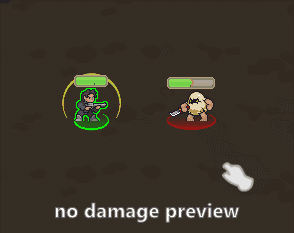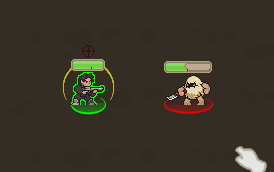Caravan Experiment Newsletter #1
Hey Everybody!
Thanks for being here for the start of this journey with me. One week down and 15 more to go. It feels great to be working on Caravan again. I’m feeling… filled with determination.
My plan for these weekly newsletters is to have three sections:
The first will be a call to action. An opportunity for anyone reading to engage with the game or my development process in some way.
The second will be the follow-up to the call to action from the previous week’s newsletter.
The third will either be a write-up about a feature I worked on during the week or perhaps some thoughts about the overall design of Caravan.
Thanks for reading, and please reply with comments and suggestions or just give me a call. I’d love to hear from all of you.
Call to Action: Help Me Look for a New Title
The call to action this week is to help me find a better title for the game. I have been calling it Caravan for a long time but I’ve never really committed to that as a title.
A great title is both memorable and conveys information about the game. Take for example Crypt of the NecroDancer. From this title we know:
The theme of the game: undead ghouls and stuff
The location of the game: a scary crypt
The genre of the game: rhythm
This title uses portmanteau (blending two words together at the boundary of a shared phoneme to create a new word) which is an especially potent mechanism because it creates a brand new word which is inherently memorable and, as a bonus, a guaranteed way to show up at the top of a Google search.
So I hope that if any of you are feeling creative you’ll try your hand at it! Please respond to the email with any suggestions and I’ll follow up in next week’s email.
Here are some resources:
Entendrepreneur (an tool that creates portmanteaus, and is really really fun)
And here is some info about Caravan:
Genre: Roguelike (using the word “rogue” in the title would be a smart move)
Setting: A massive tower on an alien planet populated by a hodgepodge of strange creatures and civilizations of all different technological acumen
Goal: Guide a caravan of fanciful alien creatures on a long journey from the bottom of the tower to the top, battling, bartering, and befriending travelers and denizens along the way
Conflict: Every few millennia the alien planet slowly exudes a rising miasma that destroys all lifeforms it comes in contact with. Your ragtag caravan just happens to be alive during one such purge. To survive, you’ll have to race against time and travel through all manner of fantastical lands the top of the tower in hopes of finding a place to live among the clouds where the atmosphere is clear.
Characters: Each time you play the game you start with a different crew of strange fantasy creatures from all manner of evolutionary and cultural backgrounds. Along the way some of the creatures in your caravan may die, but you can always recruit new ones to take their place.
New Feature: Damage Preview System
In Caravan, the actions a player takes in battle always yield predictable results. So at any time the player has complete information to calculate the result of any action they would take. As game designers we create fun by giving the player interesting choices to make, but we must be careful to remove as much friction from the decision making process as possible. In this case, that means removing mental math:
The player mouses over an enemy to designate it as a target of an attack
In both cases, the end result of committing to this attack will be the same, but now, with the damage preview the player doesn’t have to guess at how much damage will be done (or worse, calculate it on a piece of paper!).
This feature showcases one of the really neat differences between classic board games and video games. Because video games have built-in calculators, the game designer can significantly ramp up the complexity of the interactions without worrying about mental load on players. Here’s an example from Caravan where things get a little more complex:
A lot more is going on here. Firstly, the unit on the left has a special ability active that is doubling its damage output (as seen by the bull’s eye icon above its head) which means the same attack as before will now deliver a killing blow to the unit on the right. The unit on the right also has a special ability! If it is dealt a killing blow, it retaliates with some damage directed back at the unit that attacked it. As a player you can see that your attacking unit (on the left) will suffer some damage in retaliation, and you’re given a visual cue (the thorns icon) as to why this is happening.

